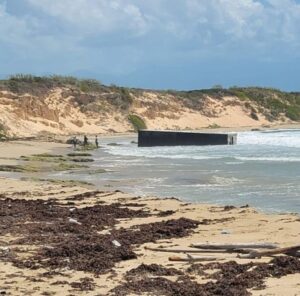Bauxite sector needs alternative fuel source
AFTER upheavals caused by a recent cut in production at three of Jamaica’s four alumina refineries, the island could be dealt yet another stunning blow as high fuel costs in excess of US$1.3 billion annually, further threaten the viability of the industry.
Former Commissioner of Mines, Coy Roache, said the high cost of energy locally, coupled with increased global production of alumina, will dictate the feasibility of operating the ageing local bauxite plants when demands rebound.
“The future of the sector locally depends a lot on reducing the cost of production,” Roache told the Sunday Observer, adding that the island’s alumina refineries, except for Jamalco, are not energy-efficient.
Roache also argued that alumina production had increased globally offering alternatives for aluminium producers and pushing Jamaica from the second highest world producer in its hey-day down to a current fifth.
Jamaica’s bauxite industry accounts for approximately 49 per cent of the island’s annual oil bill, which stood at US$2.7 billion in 2008, with the greatest spend coming from Russian-based UC Rusal which holds majority shares in refineries Alpart and Windalco.
Improving the energy productivity of the plants has become critical, Roache contended, noting that to construct a new plant would cost approximately US$1,000 per tonne of a refinery’s capacity.
Petroleum Corporation of Jamaica (PCJ) energy consultant, Dr Raymond Wright, concurred that a transfer to coal or natural gas as fuel, instead of oil, was the only way the local bauxite industry could remain competitive, given current world conditions.
“Until Jamaica actually makes a big shift in producing energy at a cheaper cost, we are not going to be competitive – whatever the industry, minerals or otherwise,” said Wright.
He added that old and outdated plants, as well as the high cost of energy seriously hampered productivity in the bauxite sector and its future viability.
The Jamaica Bauxite Institute (JBI) has also acknowledged the issue of Jamaica’s prohibitive energy costs compared to competitors on the world market but only said that a solution is “high on its list of priorities”.
Former JBI director, Carlton Davies, in a presentation last year, outlined the mounting energy production problem faced by the sector.
“If we take the average price of producing a tonne of alumina at one of our more efficient plants in 2003 and 2008 (year-to-date) and multiply by our total annual production of about 4.2 million tonnes, the cost to the industry has moved from about US$150 million in 2003 to close to US$550 million (and rising) now. No more illustration is necessary to show that we have serious problems on our hands,” he said then.
Last month Windalco (formerly Alcan), which operates the Ewarton in Manchester and Kirkvine in St Catherine plants, announced a cut in the work week to three days, while Alpart in St Elizabeth is to cease production for at least a year, starting mid-May.
The refineries cited a sudden downturn in demand for alumina triggered by the current global economic crisis and promised to restart when demand picked up. Jamalco in Clarendon remains open.
But Roache is contending that there is no guarantee alumina sales will improve for Jamaica if and when world prices and demand increase.
“Even if alumina prices go back up on the world market we could still have a problem,” he argued, adding that Jamaican plants run by UC Rusal would have to become competitive.
Roache explained that Jamalco, majority owned by US company Alcoa, had an advantage as its smelter was close to the island.
“UC Rusal has no smelter in this side of the globe,” said Roache.
Managing director of Alpart, Alberto Fabrini, has downplayed the possibility of his company retreating from the island, but cautioned that decisions were based solely on market conditions – one of them being energy cost.
“Everything now depends on the market,” Fabrini said. “I am cautiously optimistic that at the end of 2010 there could be some light at the end of the tunnel.”
He added that it would be some time before world inventories of alumina were significantly reduced to allow a restart of exports.
Fabrini is, however, also concerned about Alpart’s energy consumption in producing alumina, which he says is at least 15 per cent above other local refineries.
“Our biggest problem is our energy consumption; that is where we have lost ground to other companies,” he told the Sunday Observer.
Last November, with Alpart at full production, Fabrini declared that energy upgrade for the plant was critical for its future competitiveness.
In fact, as far back as 2007 the Russian bauxite company announced plans to invest an estimated US$360 million in two coal-fired plants as it tried to lower energy costs at its Windalco operations.
But the precipitous drop in alumina demand on the world market quickly overtook those plans in January this year, forcing the aluminium industry into retreat and a production cut-back at local plants
A 66 per cent drop in net earnings is projected this year resulting from the closures, according to JBI, but Jamaica could see further losses if the price of the island’s alumina is uncompetitive on the world market when the global crisis eases.
Roache argued that an increase in production of alumina worldwide also impacts negatively on Jamaica’s ability to compete.
“There is a great deal more suppliers on the market,” he noted.
China, for example, increased production from 7.5 million tonnes to 30 million tonnes in just over two years, while output in Brazil has also grown tremendously, Roache said.
In its early years, Jamaica ranked second in world in alumina production behind Australia, but has dropped to fifth producing approximately 16 million tonnes.












